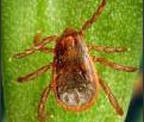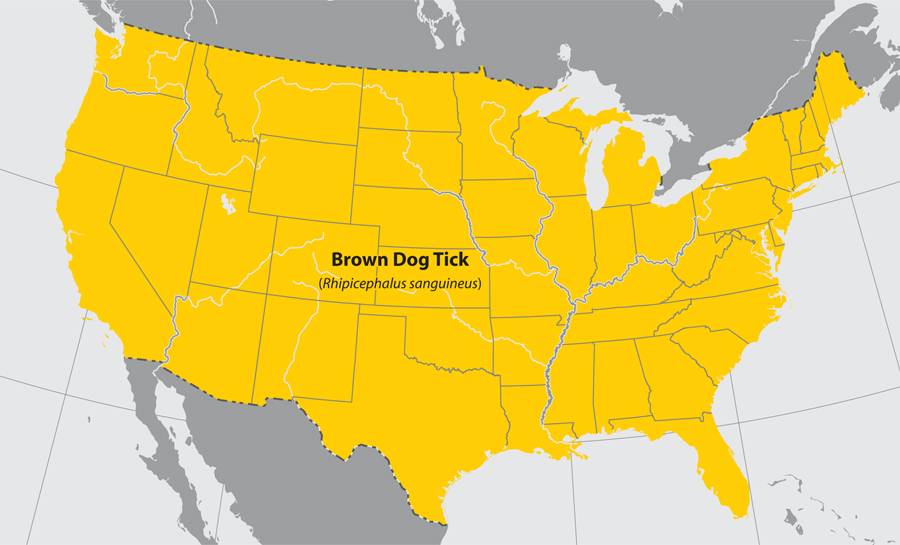Rhipicephalus sanguineus
| style="background:#Template:Taxobox colour;"|Rhipicephalus sanguineus | ||||||||||||||||
|---|---|---|---|---|---|---|---|---|---|---|---|---|---|---|---|---|
 | ||||||||||||||||
| style="background:#Template:Taxobox colour;" | Scientific classification | ||||||||||||||||
| ||||||||||||||||
| Binomial name | ||||||||||||||||
| Rhipicephalus sanguineus (Latreille, 1806) |
Editor-In-Chief: C. Michael Gibson, M.S., M.D. [1]
Overview
The brown dog tick, Rhipicephalus sanguineus, is a species of tick which is found worldwide, but more commonly in warmer climates. This species is unusual among ticks in that its entire life cycle can be completed indoors.[1]
Hosts
Rhipicephalus sanguineus will feed on a wide variety of mammals, but dogs are the preferred host in the U.S., and the population can reach pest proportions in houses and kennels.[1]
Medical importance
R. sanguineus is one of the most important vectors of diseases in dogs worldwide.[2] In the United States, R. sanguineus is a vector of the diseases in dogs: canine ehrlichiosis (Ehrlichia canis) and canine babesiosis (Babesia canis). In dogs, symptoms of canine ehrlichiosis include lameness and fever; those for babesiosis include fever, anorexia and anemia. R. sanguineus has not been shown to transmit the bacteria which causes Lyme disease in humans.[1] In parts of Europe, Asia and Africa, it is a vector of Rickettsia conorii, known locally as Mediterranean spotted fever, boutenneuse fever, or tick typhus.[1]
R. sanguineus can also transmit Rocky Mountain spotted fever in humans in the southwestern United States.[3]
Management
The best management strategy is prevention of infestations in the house or kennel. In addition, the earlier the infestation is discovered, the easier it is to control. Regular grooming and inspection of pets is essential to management, especially when dogs have been quartered or have interacted with other dogs.[1]
See also
References
- ↑ 1.0 1.1 1.2 1.3 1.4 C. C. Lord (2001). "Brown dog tick, Rhipicephalus sanguineus Latreille". Featured Creatures. University of Florida. Retrieved October 14, 2008.
- ↑ Domenico Otranto & Filipe Dantas-Torres (2010). "Canine and feline vector-borne diseases in Italy: current situation and perspectives". Parasites & Vectors. 3 (1): 2. doi:10.1186/1756-3305-3-2. PMC 2818618. PMID 20145730.
- ↑ "Rocky Mountain Spotted Fever: Questions and Answers | Tickborne Rickettsial Diseases". Centers for Disease Control and Prevention. Retrieved April 17, 2010.
External links
- Brown dog tick on the University of Florida / Institute of Food and Agricultural Sciences Featured Creatures website
- ICb.usp.br
- Extento.hawaii.edu
Gallery
- Common name: brown dog tick
- Scientific name: Rhipicephalus sanguineus
- Reservoir: dogs (entire life cycle)
- Geographic distribution: throughout the U.S. and the world
- Disease transmitted: Rocky Mountain spotted fever
-
Brown dog tick (Rhipicephalus sanguineus)
Adapted from CDC -
Approximate distribution of the Brown Dog tick
Adapted from CDC
